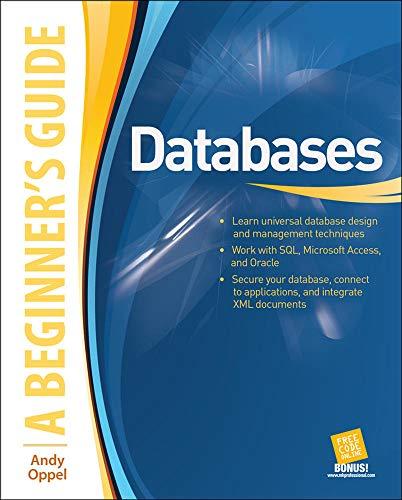Question
Exercises 1-15: Matching Terms and Definitions For exercises 1-15, write the term number and then the letter of the definition that most closely matches the
Exercises 1-15: Matching Terms and Definitions For exercises 1-15, write the term number and then the letter of the definition that most closely matches the term. There are more definitions than terms, so not all of the definitions will be used. Terms 1. 16 GB 2. 4 MiB 3. a system clock frequency of 4 GHz is equivalent to what clock period 4. assembly language 5. average CPI 6. bottleneck 7. clock cycle time 8. cpu register 9. dynamic instruction count 10. execution time 11. instruction set architecture 12. machine language 13. performance of program P running on computer system X 14. the problem that arose in the mid 2000's which has continued to limit how much clock frequencies can be increased 15. user cpu time
Definitions a. 250 ns b. 250 ps c. 3 MHz d. 3 GHz e. 4000000 bytes f. 4194304 bytes g. a characteristic of a computer system which restricts performance in some way h. an assembly language programmers view of the architecture of a computing system i. an electronic device which acts as a switch and is the fundamental component of all digital computers j. approximately 14.901 GiB k. approximately 17.18 GiB l. clock cycles or simply clocks m. number of programs or computing tasks completed during some fixed time period n. picoseconds o. power wall p. processor-level instructions which are encoded in binary q. specifies where the data for an instruction is located or where the result of an instruction is to be placed r. storage for data within the processor s. symbol representation of machine language instructions that maps directly to the processor architecture t. the data for an instruction u. the inverse of the execution time for program P running on computer system X v. the number of clock cycles it takes for a program to execute divided by the number of instructions that were executed w. the time the computer system spends executing instructions of the operating system on behalf of a program x. the time the computer system spend executing just the instructions of a program P y. the time to complete running a program or performing some computing task z. translates assembly language code into machine language aa. translates high level language code into machine language ab. the time from the rising (falling) edge of a clock signal to the next rising (falling) edge ac. the total number of instructions comprising a program ad. the total number of instructions that are executed when a program is run
Step by Step Solution
There are 3 Steps involved in it
Step: 1

Get Instant Access to Expert-Tailored Solutions
See step-by-step solutions with expert insights and AI powered tools for academic success
Step: 2

Step: 3

Ace Your Homework with AI
Get the answers you need in no time with our AI-driven, step-by-step assistance
Get Started


